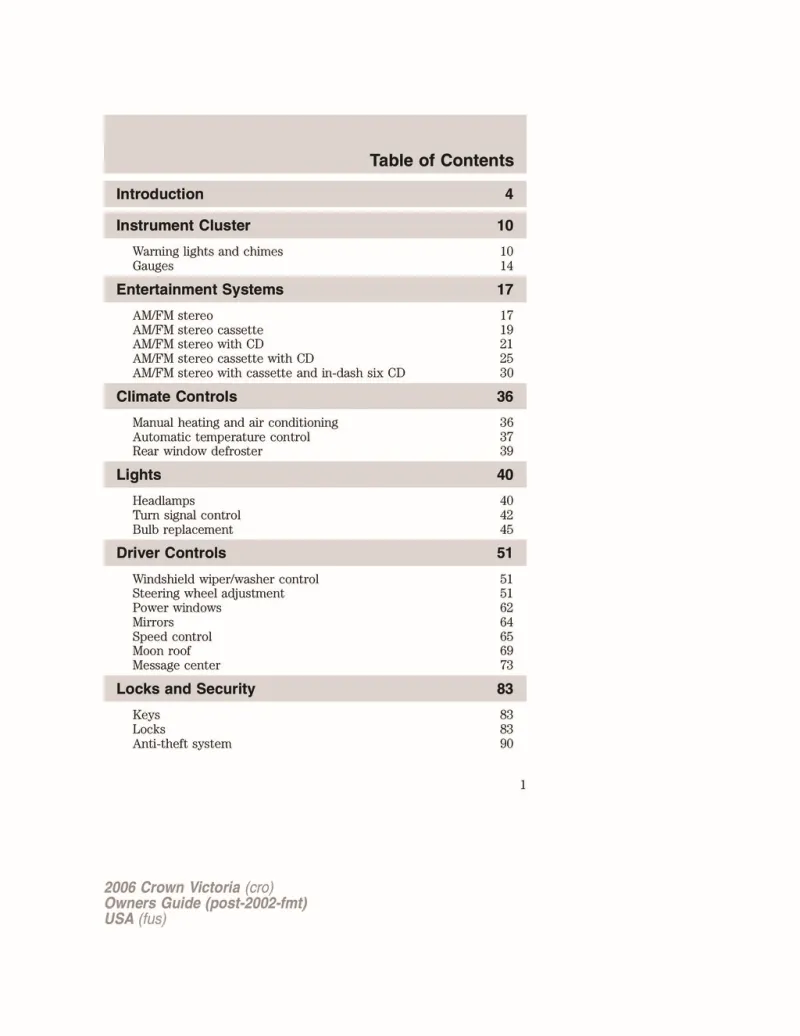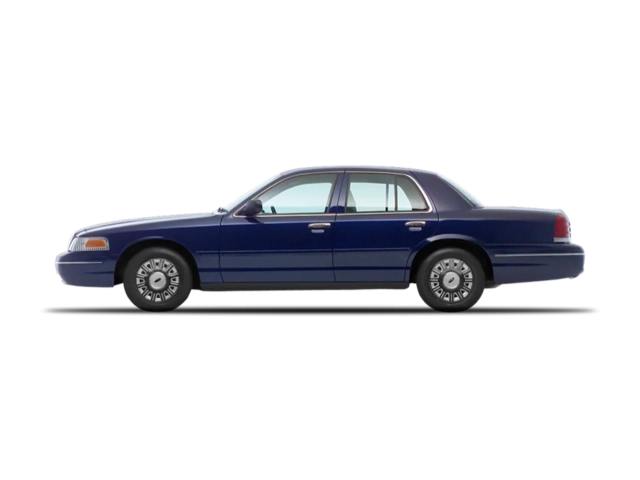2006 Ford Crown Victoria Owner's Manual

Table of Contents
2006 Ford Crown Victoria Overview
Introduction
The 2006 Ford Crown Victoria is emblematic of traditional full-size sedans, embodying a blend of power, dependability, and spacious comfort. Known for its classic styling and robust construction, this model continues to be a favorite among law enforcement agencies and urban drivers alike. With a reputation for reliability and a refined driving experience, the Crown Victoria stands as a testimony to Ford's commitment to producing American automotive icons.
Powertrains
Under the hood, the 2006 Crown Victoria offers a potent 4.6-liter V8 engine, capable of producing up to 250 horsepower and 280 lb-ft of torque. This powertrain is paired with a smooth-shifting 4-speed automatic transmission, ensuring confident acceleration and highway driving prowess. The rear-wheel drive configuration enhances the car’s handling characteristics, providing stability and control in various driving conditions. The Crown Victoria's robust engine not only delivers impressive performance but is also known for its durability, making it ideal for both everyday commuters and demanding fleets.
Trims
The 2006 Ford Crown Victoria is available in three main trims: the base model, LX, and the sporty LX Sport. The base model is well-equipped, featuring essential amenities, while the LX trim elevates the experience with additional luxury items like comfortable leather seating and a premium sound system. The LX Sport variant adds a touch of flair with sport-tuned suspension and unique styling cues, appealing to those seeking an extra edge to their driving experience.
Features
Inside the 2006 Crown Victoria, a spacious cabin awaits, accommodating up to six passengers comfortably. Features such as a wood-trimmed dashboard, power-adjustable front seats, and advanced audio systems enhance the driving experience. Safety is paramount, with standard equipment including anti-lock brakes, traction control, and a comprehensive airbag system. With an emphasis on comfort and convenience, the Crown Victoria also offers ample trunk space, making it perfect for road trips or family outings.
Owner's Manual
The owner's manual for the 2006 Ford Crown Victoria serves as an essential guide for maintaining and understanding the vehicle. It contains detailed information on operating the car's features, maintenance schedules, and troubleshooting tips. Whether you're a new owner or an experienced driver, the manual ensures that you can get the most out of your Crown Victoria, highlighting the importance of regular upkeep to prolong its lifespan and performance.
User manual download
The Ford Crown Victoria owner manual for the 2006 model year is to be found in PDF downloadable format on this page. The owner manual for the model year 2006 is free and in English, but the repair manuals are usually not easy to get and may cost more.
Manual Questions
Fill the form below and someone will help you!

